Reflection on Small Grains in Michigan: A Food Grade Grains Field Day - featuring conversations from field to mug, spoon, and jug
The 2025 Food Grade Grains Field Day provided insights into grain operations in Michigan, highlighting crops such as barley, rye, wheat, open-pollinated corn, dry beans, and canola.
“What was the last delicious whole grain that you had the pleasure of enjoying?” asked Julie Doll, CEO of Michigan Agriculture Advancement. The 90 participants attending the second annual Food Grade Grains Field Day reflected on this question while eating delectable pastries from Field and Fire Bakery, made with local grains from Melody Bee Farms. Doll later probed participants to think about the entire supply chain that made it possible to enjoy these grains - the farmers, service providers, millers, bakers, and the list goes on. This is what the Food Grade Grains Field Day is all about - learning and networking across the supply chain to understand the vastness of research, knowledge, and passion needed to get from field to mug, spoon, and jug.
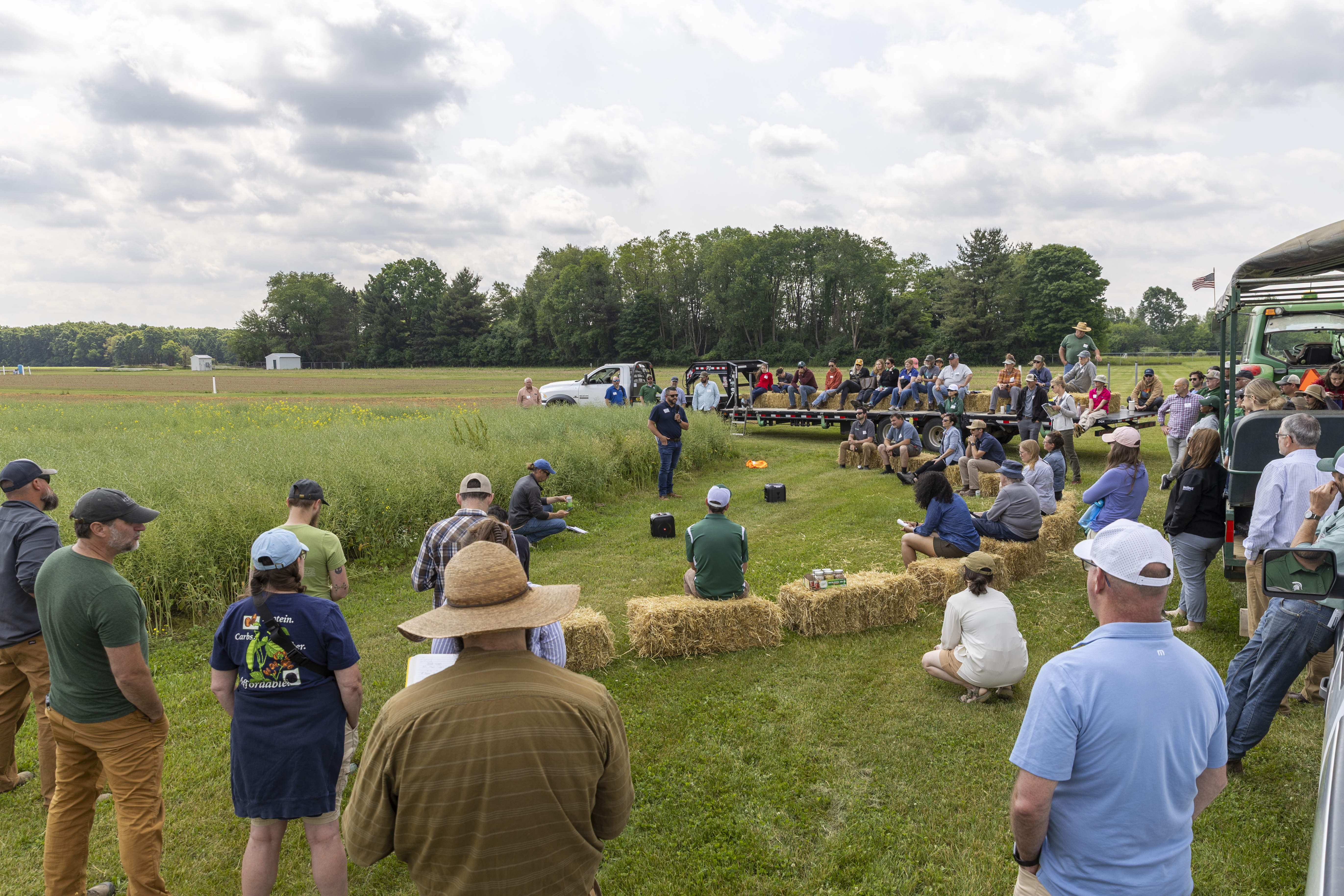
The field day took place at the W.K. Kellogg Biological Station (KBS), home of three federally-funded long-term agricultural research programs that provide the fundamental infrastructure for research on food grade grains. The day featured six crops that are grown in Michigan - barley, rye, wheat, open-pollinated corn, dry beans, and canola.
Keys themes throughout the day included:
- Small grains are a “gateway crop to conservation” that help farmers diversify their operations and have time to plant cover crops, ultimately building better soil health on their farms.
- Participants wanted to know if grains grown in healthier soils may better support animal and human health, as well as impact downstream product flavor and quality. Ongoing research at MSU seeks to address some of these questions.
- Farmers value research and variety trials conducted by KBS and MSU-Extension because the research helps them identify the best crop for their field and purpose, and to predict challenges they may face ahead of time.
- There is significant interest in creating a local grain economy that connects Michigan grain growers with downstream processors (millers, bakers, maltsters, distillers), but there is a need for better connection and support between these groups, especially for smaller-scale operations.
Continue reading below for key points from each speaker, and a list of food-grade grains resources.
The Food Grade Grains Field Day was co-organized by Michigan Agriculture Advancement, MSU Extension, and the KBS Long-Term Agroecosystem Research program, and supported by the Artisan Grain Collaborative and the Michigan Craft Beverage Council.
Please join us next year! See below for resources described during the Field Day.
You can join the Michigan Agriculture Advancement newsletter here.
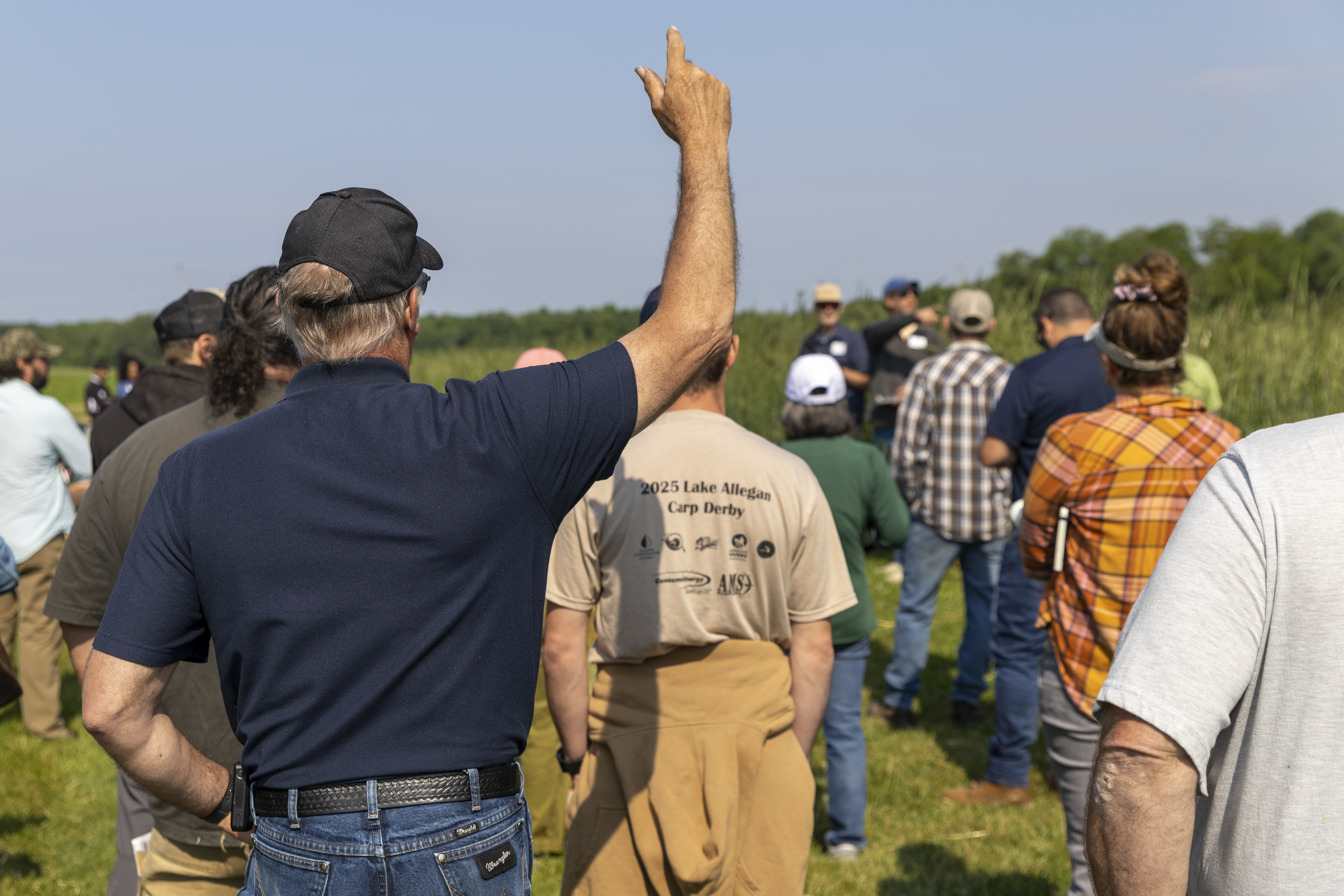
BARLEY
First, participants learned about winter barley - “the world's most beautiful crop” according to Brook Wilke, KBS LTAR Associate Director for Science and Agronomy. Larry Judge, maltster at Mitten State Malt, described the unique challenge of storing and malting barley - that it has to be alive to malt it, which is in contrast to many raw or unmalted grains used in spirit production (corn and rye are common). Scott Graham, Executive Director of the Michigan Brewer’s Guild, described the “huge opportunity” to create a local grain supply chain, and the necessity of variety trials led by MSU Extension. Different quality metrics in the varieties will result in a different product, which could set local barley apart from most barley which is sourced from the Western United States.
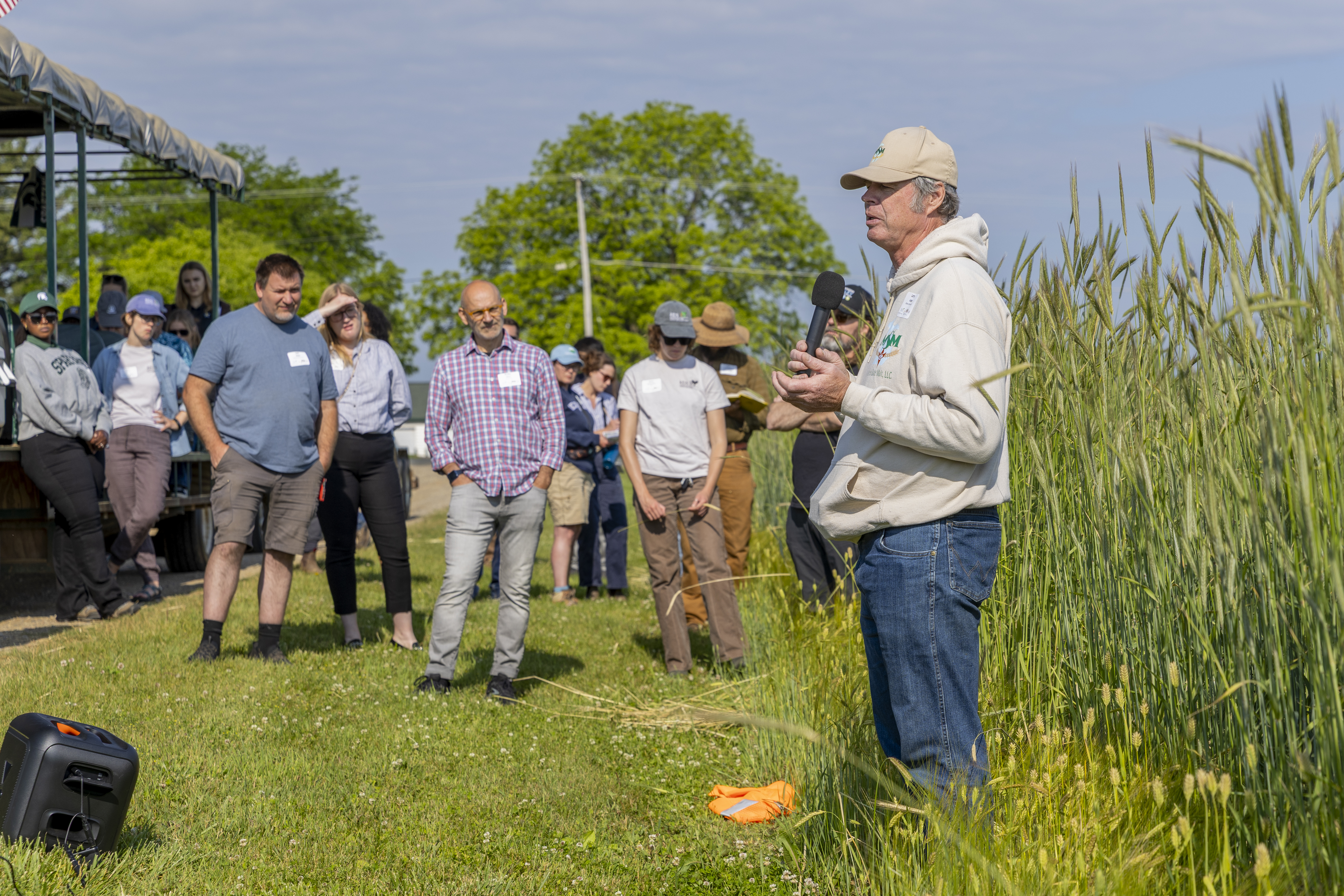
RYE
Farmer speakers, including Carl Wagner III of C3 seeds, and Chris Ratajczak of C & K Ratajczak Family Farms (who was absent because he was harvesting rye), both described the hardiness of rye, and that it is an ideal crop for the “toughest acres”, as it aids in erosion control and can build soil organic matter. Jeff Eddington, COO of Iron Fish Distillery, further described how where a crop is grown, how and where it is distilled and barrel-aged all impact the flavor a customer tastes in the glass. Iron Fish Distillery helps customers think about the relationship between the land and the drink with a road sign to their location stating “one barrel of whiskey per acre.”
WHEAT
Wheat is the third most common field crop grown in Michigan, covering nearly 500,000 acres. Eric Olsen with MSU-Extension talked about wheat as a “blank canvas for processors and bakers.” He encouraged growers to plant multiple varieties to split their risk with diseases, and also to spread out their harvest times. Simon Yevzelman with The Nature Conservancy (TNC), further emphasized the benefit of small winter grains which can give farmers more time to plant cover crops. Cover crops have broad benefits - including providing additional nitrogen, reducing farmers’ reliance on fertilizers, increasing soil health and improving water quality. TNC has a goal of increasing the number of wheat and oat acres in Michigan by partnering with local organizations and farmers.
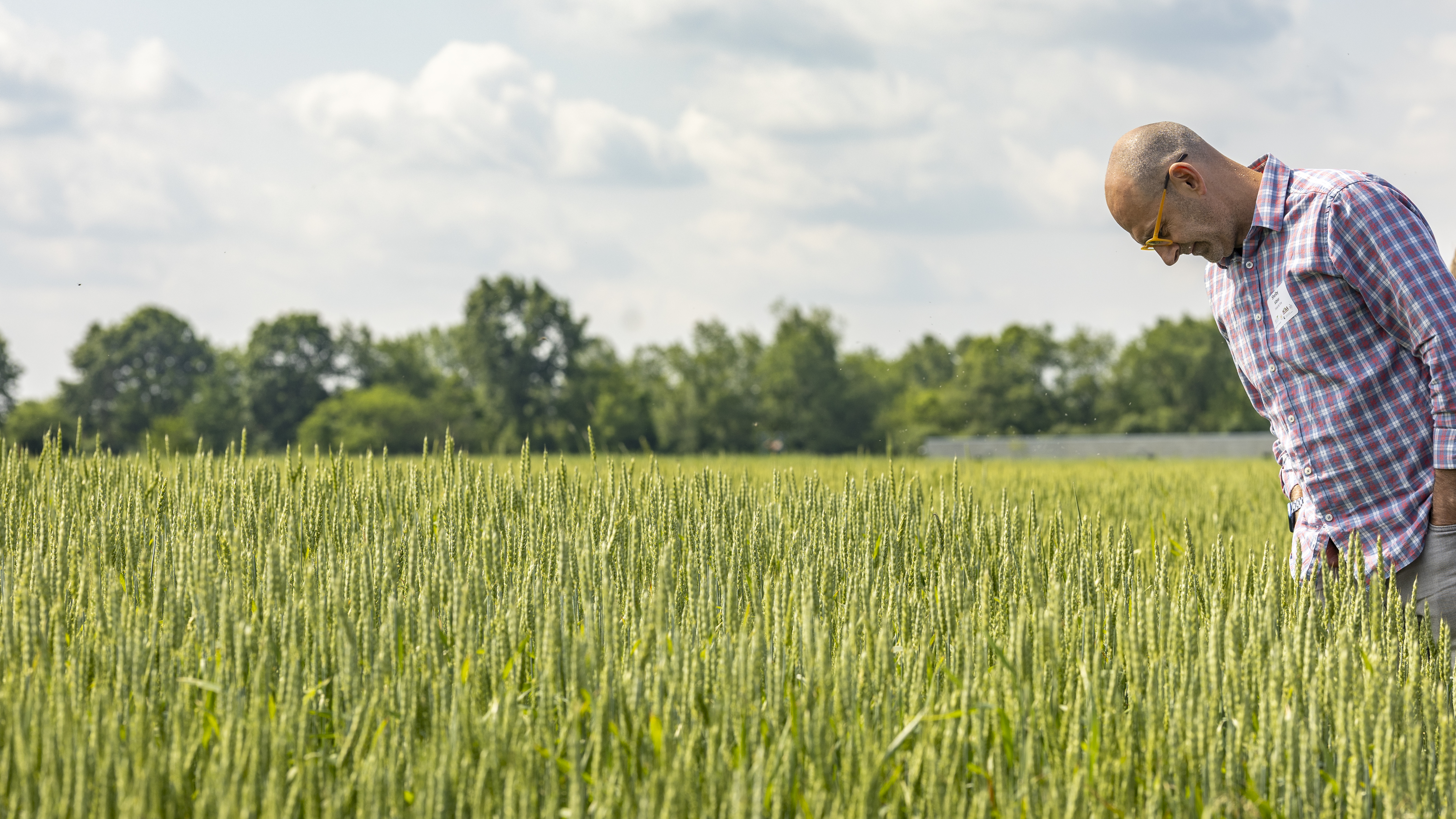
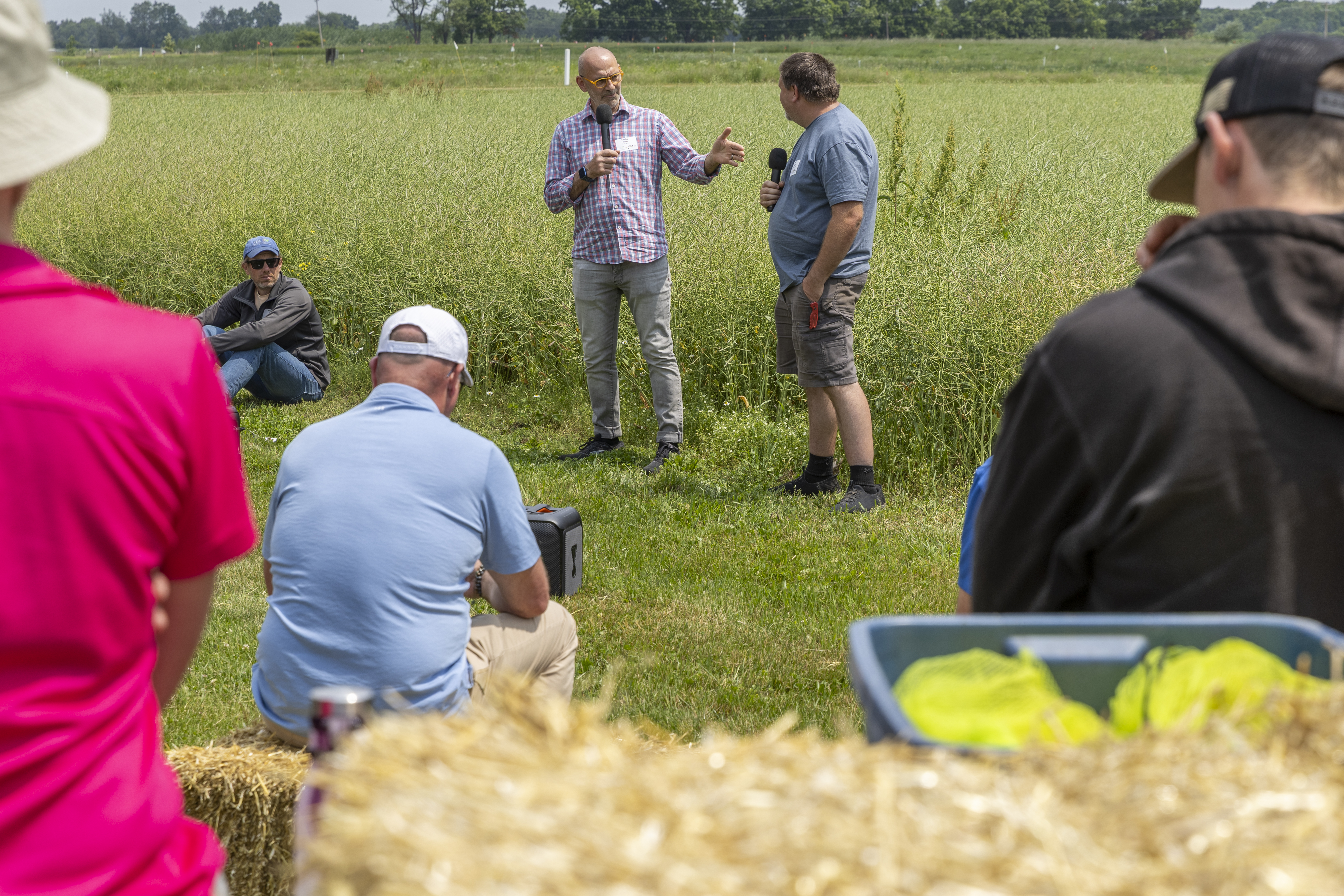
OPEN-POLLINATED CORN
Next, participants looked at ears of corn that represented nearly all colors of the rainbow. Lorato Wood with MSU described that 21 different varieties of open-pollinated corn are being studied in three locations across Michigan, including at KBS, to understand their characteristics, nutrient content, and opportunity for distilling. Brook Wilke had fun telling us about the names of some of these varieties, including Bloody Butcher (dark red) and Wahokin Green (green) - which received a “Go Green” from local Spartans in the audience.
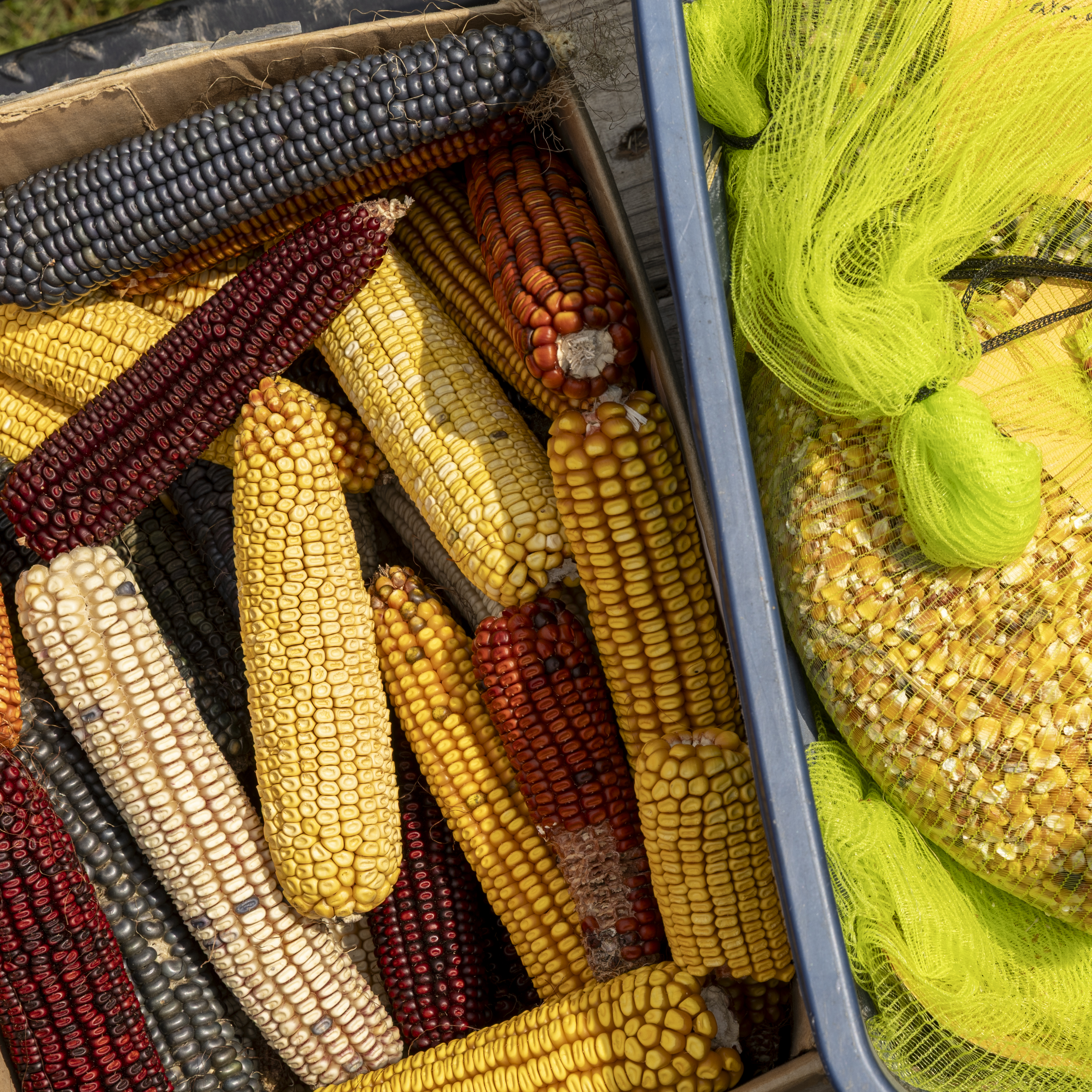
DRY BEANS
Farmer Kevin Messing from Sheridan Acres Farm passed around jars of beautiful heirloom beans that he sells directly to market. This means that he cleans, bags, and markets his own beans. Some of his key challenges include managing moisture, as heirloom beans are particularly sensitive to moisture. He also shared the challenge of learning to value your time, especially when you sell direct to market. “As farmers, we’re not good at valuing our time, but we need to know our time and value otherwise it [growing and selling] becomes exercise.”
CANOLA
Canola, a brassica grown for both oil production and meal for animal feed, was discussed by Brook Wilke and Tom Butcher, grain elevator manager at Archer Daniels Midland (ADM). Canola has been grown in Michigan for decades, but winter canola has emerged in the last five years due to an increase in demand from ADM which processes canola in Windsor, Ontario. Most farmers, Tom says, grow canola with conventional tillage. The KBS Long-Term Agroecosystem Research (LTAR) site is trying to figure out how to grow canola in a no-till system, but it can be challenging to manage weeds and slugs. Ongoing research at the KBS LTAR will provide further insights to canola management.
FOOD SYSTEMS
Finally, the tour ended with reflections on how the whole food system and how farmers, millers, bakers, maltsters and distillers can work together to create Michigan crafted products. The dynamic farmer and baker duo (Josh Nobel of Melody Bee farms and Shelby Kibler of Field and Fire Bakery) that provided the morning goodies spoke about how their trust and flexibility with each other has helped them both build successful businesses that can withstand variable weather and market conditions. Finally, Jenelle Jagmin, director of the Michigan Craft Beverage Council, announced their new “Michigan Crafted” initiative which aims to “tell the story from the farm to the glass.” This initiative will help business makers label their goods to show that they’re unique in supporting Michigan local. She has big goals for the initiative, and if the interest in this field day has anything to show - we think Michigan is on the right track. To end, a quote from Jenelle: “Michigan is a special place, and once we know how to market ourselves, the rest of the country will get onboard and buy from us.”
Resources:
- MSU-Extension Resources:
- The Great Lakes Yield Enhancement Network (YEN) program for wheat
- Midwest cover crops council cover crops selector tool
Artisan Grain Collaborative – resources and guides regional grain map of grain network in the Midwest



 Print
Print Email
Email
